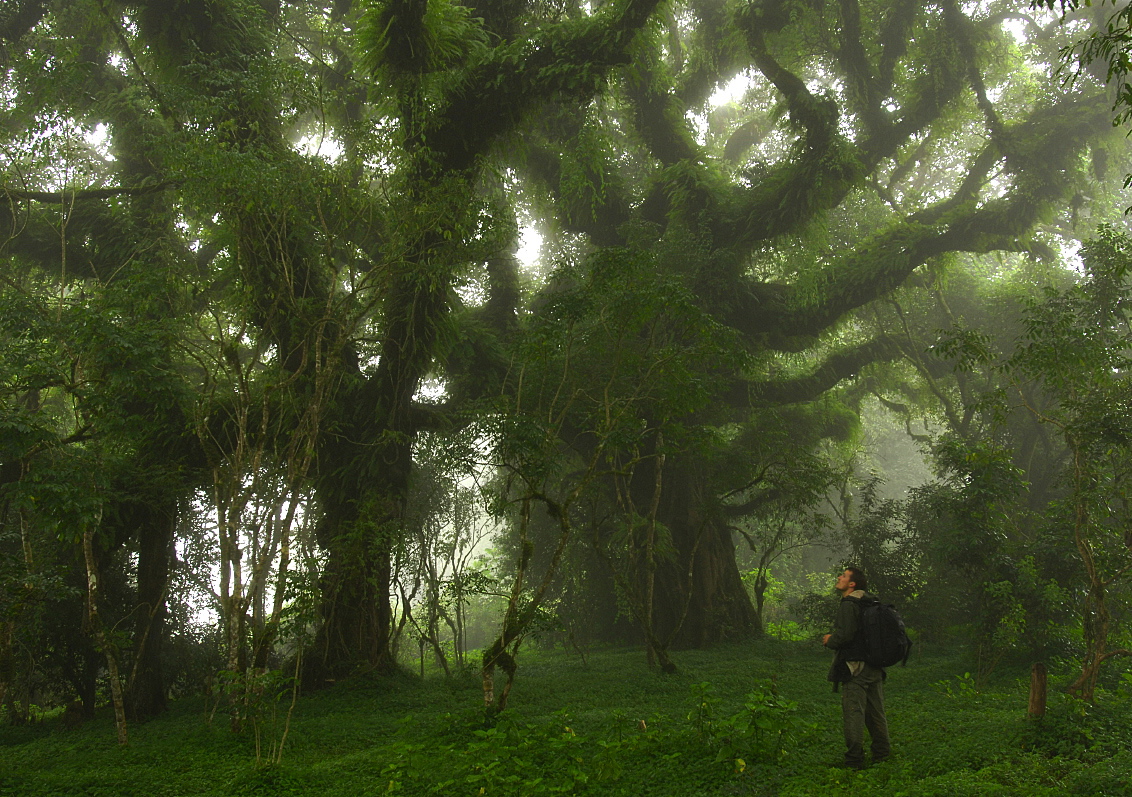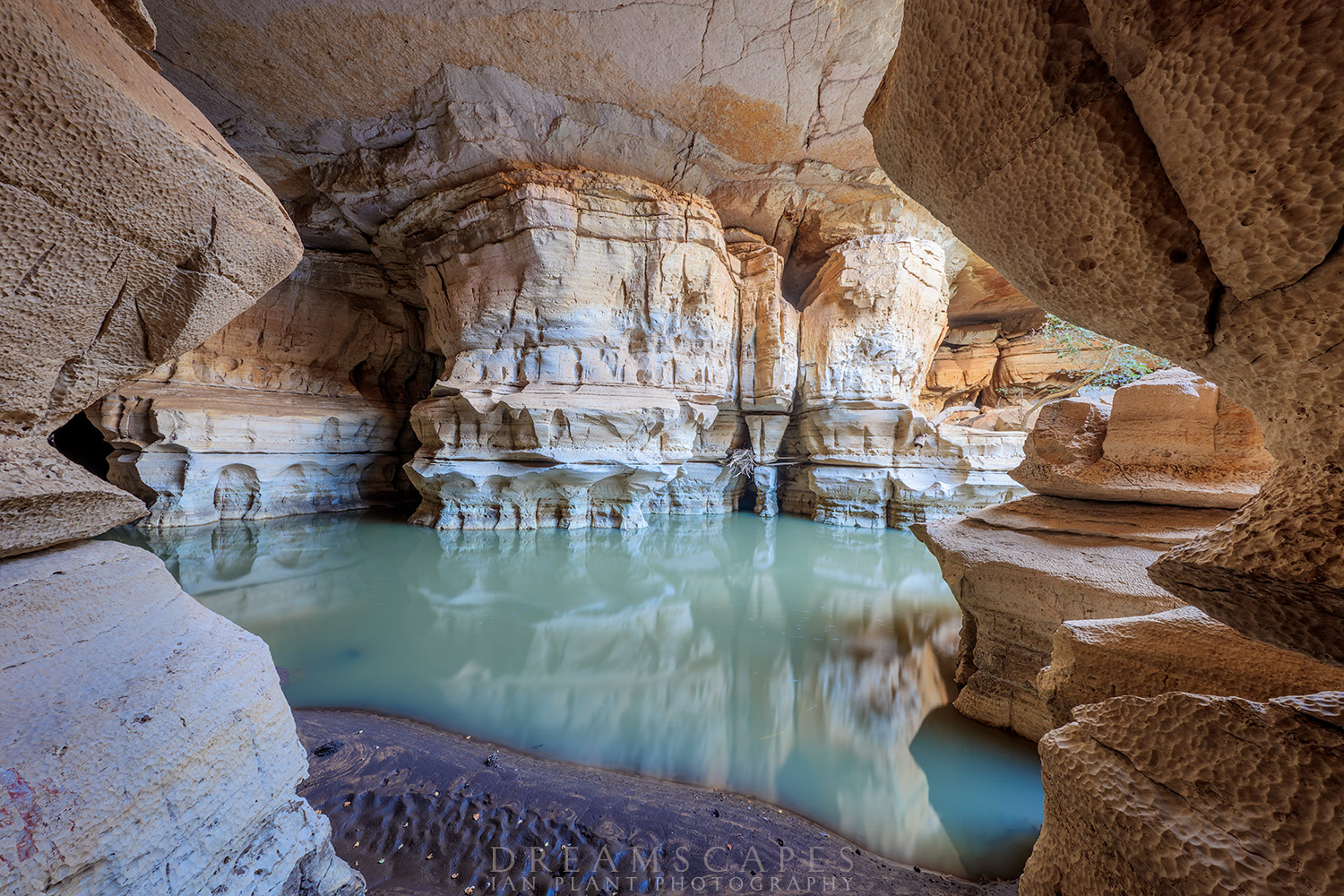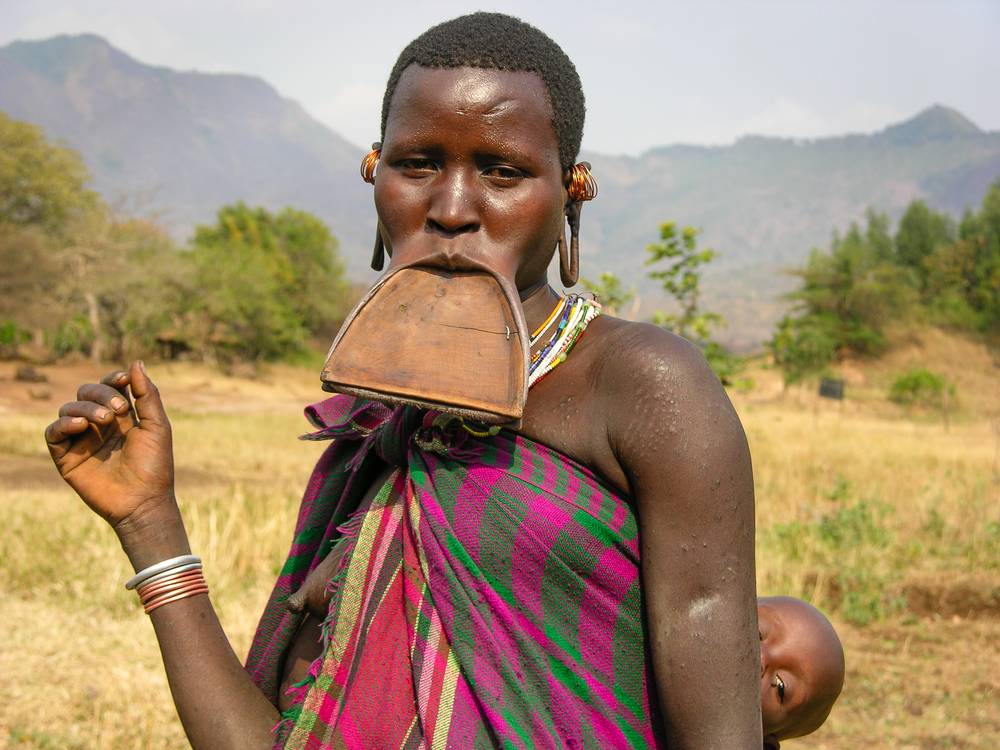National Park

Semien Mountains National Park:
The Semien Mountains are a must for all those interested in wildlife, scenery and spectacular landscapes, the Park has been declared a World Heritage Site by UNESCO.
The Semien Mountains constitute one of the major mountain massifs in Africa. The region includes many summits above 4000 meters and culminates in the highest point in Ethiopia, RasDejen, at 4620 meters, the fourth highest mountain in Africa......
It is home to the endemic mammals of Walia Ibex, Semien Fox, Gelada Baboons and many species of birds and plants apart from its spectacular scenic beauty. The simien mountain massif is one of the major highlands of Africa, rising to the highest point in Ethiopia, RasDejen (4533m), which is the fourth highest peak in the continent. Although in Africa and not too far from the equator, snow and ice appear on the highest points and night temperatures often fall below zero. The national park has three general botanical regions. The lower slopes have been cultivated and grazed, while the alpine regions (up to 3600m) were forested, although much has now disappeared. The higher lands are mountain grasslands with fescue grasses as well as heathers, splendid Red Hot Pokers and Giant Lobelia. The park was created primarily to protect the Walia Ibex, a type of wild goat, and over 1000 are said to live in the park. Also in the park are families of the Gelada Baboon and the rare Simien fox. The Simien fox, although named after the mountains, is rarely seen by the visitor. Over 50 species of birds have been reported in the Simien Mountains.
Maximum temperatures during the day are about 15o Centigrade (60 0 F). At night the temperature usually drops to 3 – 5 o C (35o -40o F)

Bale Mountains National Park:
An area of high altitude plateau that is broken by numerous spectacular volcanic plugs and peaks, beautiful alpine lakes and rushing mountain streams that descends into deep rocky gorges on their way to the lowlands below. As ascending into the mountains experience changes in the vegetation with altitude, from juniper forests to heather moorlands and alpine meadows, which at various times of year exhibit an abundance of colorful wildflowers. Bale Mountains National Park is the largest area of Afro-Alpine habitat in the whole of the continent. It gives the visitor opportunities for unsurpassed mountain walking, horse trekking, scenic driving and the chances to view many of Ethiopia’s endemic mammals, in particular the Mountain Nyala and Semien Fox, and birds, such as the Thick-billed Raven, Wattled Ibis, Blue-winged Goose, and Rouget’s Rail......
It rises from the extensive surrounding farmlands at 2,500 m above sea level to the west, north and east. The National Park area is divided into two major parts by the spectacular Harenna escarpment that runs from east to west. North of this escarpment is a high altitude plateau area at 4,000 m altitude. The plateau is formed of ancient volcanic rocks (trachytes, basalts, agglomerates and tuffs) dissected by many Rivers and streams that have cut deep gorges into the edges over the centuries. In some places this has resulted in scenic waterfalls. From the plateau rise several mountain massifs of rounded and craggy peaks, including TulluDeemtu the second-highest mountain in Ethiopia at 4,377 m above sea level. (RasDashen, near the Simien Mountains National Park in the north is the highest – 4,543 m). A major part of the central peaks area is covered by a capping of more recent lava flows, still mainly vegetated, and forming spectacular rock ripples and pillars. Many shallow depressions on the plateau are filled with water in the wet season, forming small lakes that mirror the surrounding scenery. Larger lakes such as GarbaGuracha (“black water”), HoraBachay and HalaWeoz, contain water all year round. These many lakes provide habitat for water birds, especially migrating ducks from Europe during the northern winter.

Gaysay
This area derives its name from the little Gaysay River that flows into the Web near Dinsho. It consists of Boditi peak at the southern end of the Lajo Spur, and the flatlands each side of the Gaysay River at the mountain’s base. The main road crosses part of the Gaysay area, just before reaching Dinsho.

Sanetti Plateau
Make best use of your time in the Bale Mountain National Park throw it and focusing on the high altitude Sanetti plateau. Observe the endemic Ethiopian Wolf, the Giant Molerat, and much more. Walk about the plateau enjoying the awe-inspiring landscape......
The road is lined with the orange-blossomed Lenontis and in the wet season the “red hot pocker”(Kniphofia) is blooming beneath the trees and attracting the brilliant iridescent Tacazza and Malachite sunbirds. On this area Wintering spotted, Imperial and other Aquila eagles are amongst the birds of prey that you may see, and almost all Ethiopians vulture species regularly occur.
After spending the morning on the plateau, drive to the spectacular Harenna Escarpment, some remarkable views and an afternoon in which to descend the Escarpment. It will be more realistic to set our sight on such endemic birds as white-backed Black Tit, Abyssinian catbird, Black-winged Lovebird, Golden-backed wood pecker and Black-headed Siskin perhaps.

Mount Batu
Is a longer walking prospect, but can be done in a long day from the plateau road. The mountain is a long horseshoe-shaped ridge at the head of the great Shiya and Tegona River gorges. It is very craggy and more rugged than TulluDeemtu in appearance, and seemingly more mountainous, for all that it is a few metres lower. Leopard has been sighted near the top, as have Klipspringer and Mountain Nyala, while montane birds such as the chough and lammergeyer soar effortlessly over as you climb up the mountain’s flanks.

Harenna Forest
To the south of the Park lies a 1200m (3700ft) escarpment, below which is one of the largest and most extensive forests remaining in Ethiopia, the Harenna Forest. The slope of the southern escarpment falls rapidly from the tree line at 3200m to around 2000m within a distance of only 8 km, producing a rapid and spectacular change in landscape, habitat, and species composition. Here rare Bale Monkeys inhabit the trees and the birdlife is spectacular. Wild coffee is harvested to the south of the lodge and delicious Bale honey is obtained by the local people from hives placed high within the canopy. Here is also found 3% of the Africa’s remaining bamboo forest. Harenna is truly a magical place in which to relax or to explore..

Sof Omar Caves
The fantastic limestone caves of Sof Omar make a day’s outing from Dinsho, Robe or Goba. The road leaves Robe town, crossing the farming areas to the east, before descending into the lowlands. Here the vegetation is very different being dry lowland with wooded grasslands. The caves lie at 1,300 m above sea level. This is in marked contrast to what you will experience in the Bale Mountains at up to 4,000 m. Very different animals occur along the way as well, most noticeably the Greater and Lesser Kudu – both relatives of the Mountain Nyala, and the tiny dikdik antelope. The caves themselves carry the whole flow of the Web River that rises in the Bale Mountains, underground through wonderfully carved caverns for a distance of one and a half kilometer.

Awash National Parks:
Located in the lowlands 225 km east of Addis Ababa, the south boundary of the park is formed by the Awash River which swings North soon after leaving the park and eventually disappears into the Afar (Danakil) region. The Park covers an area of 827 square kilometers, most of it lies at an altitude of 900 meters. In the middle of the park is the dormant volcano of Fantale, reaching a height of 2007 meters at its top.
The wildlife of Awash reflects its dry nature, at all places and all times it is possible to see its population of mammals such as the Beisa Oryx, Soemmerrings Gazelle and Wild Pigs are common. Slightly less frequent are the furry waterbuck which tend to appear near the river in the late afternoon. The tiny Salts Dik-Dik, not easy to spot in the speckled shade of the acacia thorn, Zebra grazing the plains to the west of Fantale, Cheetah, Serval and Leopard are also there but it is not easy to spot them; Baboons, both Anubis and Hamadryas, Kudus, lesser and greater, the Giant Tortoise, Reedbuck, Aardvark and Caracal are also represented. Klipspringer inhabits the higher slopes of the mountain and curious Hyrax peer at you curiously from behind their rocks. In the bottom of the gorge you can spot the black and white Colobus Monkey. Crocodile and Hippopotamus are seen both in the Awash River and in the cooler parts of the hot springs and rivers in the north.
The birds of Awash are numerous, over 350 species are recorded for the park: (The check list is available at the museum at park Head quarters). They range from the great ostrich, frequently and easily observed, and the less common Secretary Bird and Abyssinian Ground Hornbill, to the flashes of brilliant pink which are the Carmine Bee-eaters, and the Abyssinian Roller with turquoise and purple, wings.

NechSar National Park
Some 300 km east of the Omo, NechSar embraces the eastern shores of the two southernmost of Ethiopia’s Rift Valley Lakes, Abaya and Chamo. The park was established as a sanctuary for the endangered endemic Swayne’s Hartebeest. But no less than 84 mammal and 343 bird species have also been recorded in the park.

Omo National Park:
Located in the south-west on the west bank of Omo River, 870km south-west of Addis Ababa, covering an area of approx 4,068 sq km. It is a vast expanse of true wilderness, adjacent to theOmo River, which flows southwards into Lake Turkana and is one of the richest and least-visited wildlife sanctuaries in eastern Africa. Eland, oryx, Burchell’s zebra, Lelwel hartebeest, buffalo, giraffe, elephant, waterbuck, kudu, lion, leopard and cheetah roam within the park’s boundaries. Over 306 species of birds can be seen. This is also a wonderful area for visiting local peoples and experiencing their cultures.
The Omo Valley is virtually free of human habitation but is rich in palaeo-anthro-pological remains. According to scientific research done in 1982 by the University of California at Berkeley, hominid remains from the Omo Valley probably date back more than four million years.

Mago National Park:
With an area of 2,162 km2 and at 770 km from Addis Abeba, Mago National Park is one of the relatively more accessible and thus more frequented parks because it offers a combination of great camping environment, game viewing and tribal people close by. Mago lies opposite the Omo National Park on the eastern bank of the river.
Gambela National Park:
Located about 800kms from Addis Ababa on the river Baro, Gambela has a strange history. The undulating plains of high Sudanese grass offer excellent opportunities for wilderness exploration. It is not particularly easy to access however. Beyond Gambela towards the Sudanese border, the Anuak cultivators give way to the nomadic Nuer. These pastoralists herd their long-horned cattle into huge camps when they stop for the night.
In the river are to be found huge Nile perch, up to 100 kilograms, crocodiles and hippos. Other wildlife includes buffalo, giraffe, waterbuck, Roan antelope, zebra, bushbuck, Abyssinian reedbuck, warthog, hartebeest, hyena, lion and elephant. Unfortunately, there are very few animals to be seen in the park, but the birds are many and varied, the olive baboon and the local race of the vervet, with its white whiskers, are the very common, as is the black and white colobus monkey.
